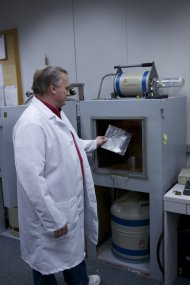Archived event information, March 11 - May 15, 2011
Note: This information is no longer being updated.

Updated Thursday, May 5, 2011, 12:20 PM:
Oregon Public Health reports minimal health risk from trace radiation from Japan
The Oregon Public Health Division and the Environmental Protection Agency continue to track levels of radiation linked to the nuclear power plant event in Japan. There is no public health risk due to the trace levels of radiation from Japan. The levels of radiation have been steadily decreasing.
In fact, as of Monday, April 25, radiation levels from the EPA monitoring stations in Portland and Corvallis from the Japan nuclear power plants were shown to be at less than detectable levels, even with sophisticated monitoring instruments.
Tests performed by the Environmental Protection Agency continue to confirm that milk sold in Oregon is safe to drink. Samples both of rainwater, tap water, sea water and milk tested to date continue to show no radiation from events in Japan. This news is expected due to the extremely low levels of radiation from Japan that had been detected in our air monitoring for several weeks after the March 11 tsunami and earthquake events in Japan.
Trace amounts of radiation from Japan had been detected in the air in Oregon after the March 11 events in Japan. When it rained or snowed, precipitation also picked up small amounts of this material. However, these trace amounts of radiation in air and precipitation posed minimal risk to the health of Oregonians. The small amounts of radiation that have come to Oregon due to the events in Japan have been well below the typical levels seen every day from natural sources, such as from minerals and sunlight. Information about rainwater and drinking water
is now available in English as well as six other languages: Spanish, Russian, Vietnamese, Japanese, Korean and Chinese.
Oregon’s results are consistent with findings reported by Washington and California, as well as by federal and Canadian partners. Because of the nearly 5,000-mile distance from Japan, combined with air diffusion, radiation reaching our state was so diluted that the health risk here is minimal, making protective action unnecessary.
The estimated biological effect from the trace amounts of radiation (iodine 131 and cesium 137) previously detected in Oregon from the events in Japan had been less than .00016 millirems. To put this into perspective, a person would need to be exposed to this level all day, everyday for more than 100 years, to equal the exposure from one chest X-ray.
Oregon Public Health Division officials continue to coordinate closely with EPA, the U.S. Food and Drug Administration, and the Centers for Disease Control and Prevention. EPA will continue to communicate our nationwide sampling results as they come in.
Oregon Public Health officials continue to
track general radiation levels in Oregon and the information is available to the public. Due to the trace levels – and now less than detectable levels of radiation coming from Japan - we post new levels twice weekly, on Mondays and Thursdays.
Federal government Information:
The federal government is now providing information on various agency websites. They include:
Latest Oregon Resources
Information e-mail: RPS.OHA@dhsoha.state.or.us
A telephone information line was also available during this event.